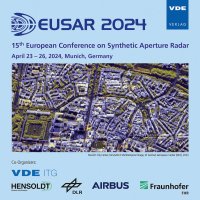Need for Mutual DEM Calibration for Monitoring of Height Changes from TanDEM-X DEM Difference
Conference: EUSAR 2024 - 15th European Conference on Synthetic Aperture Radar
04/23/2024 - 04/26/2024 at Munich, Germany
Proceedings: EUSAR 2024
Pages: 5Language: englishTyp: PDF
Authors:
Gonzalez, Carolina; Rizzoli, Paola; Milillo, Pietro; Dell’Amore, Luca; Bueso-Bello, Jose-Luis; Nagler, Thomas; Zink, Manfred
Abstract:
InSAR-derived digital elevation models (DEMs) are currently the best way to generate global and homogeneous products representing the Earth’s topography. Monitoring topographic changes is one of the main topics, which can be assessed by evaluating the difference between two DEMs acquired at different times. However, this is only possible when the DEMs are properly calibrated, as DEMs can be affected by residual offsets and tilts. This calibration is often performed by utilizing reference tie-points, whose location and height is known a priori or well estimated through other reference sensors such as GPS or Lidar data. This is in general a manual procedure and relies on the availability of time-consistent external reference points. By exploiting persistent scatterers candidates from Sentinel-1 time-series we demonstrate the possibility to perform an automatic selection of reliable tie-points and discuss their applicability to use them to calibrate a pair of single pass TanDEM-X DEMs. In this paper we want to introduce and elaborate on the novel proposed technique and discuss its potential for the monitoring of height changes that can be in the order of magnitude of the residual calibration errors, finding possible applications for the monitoring of evolving processes, such as open-pit mining, permafrost unfreezing processes or volcanic lava flows.


